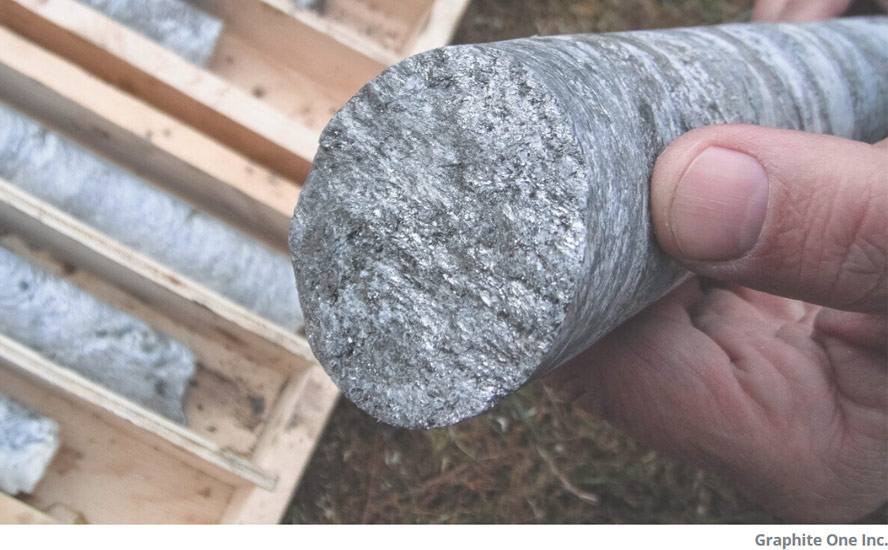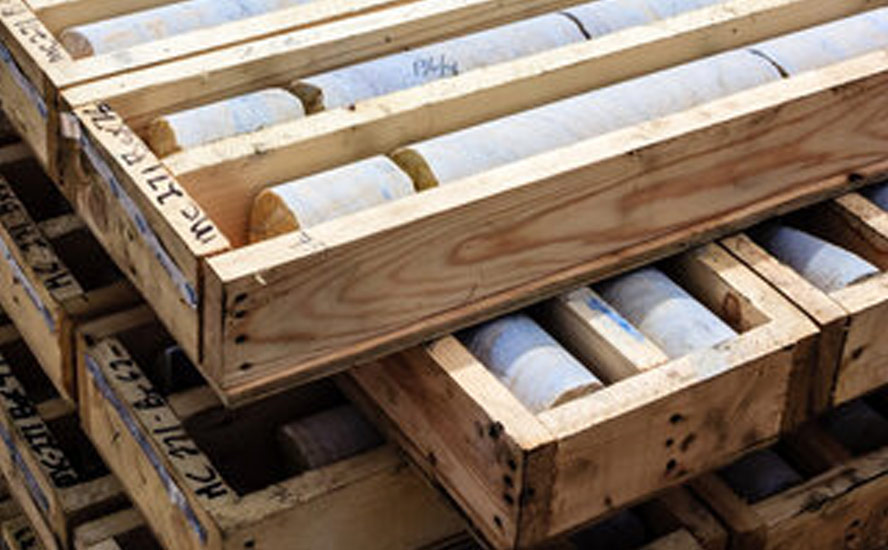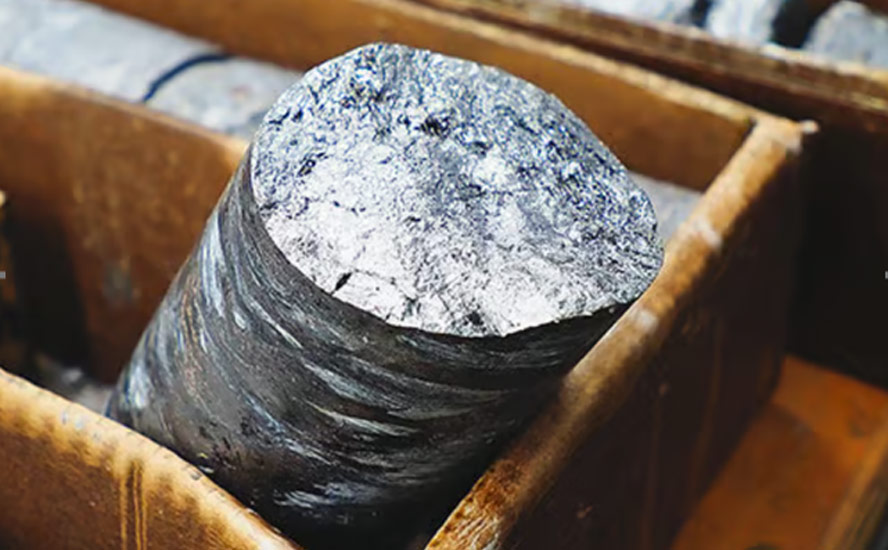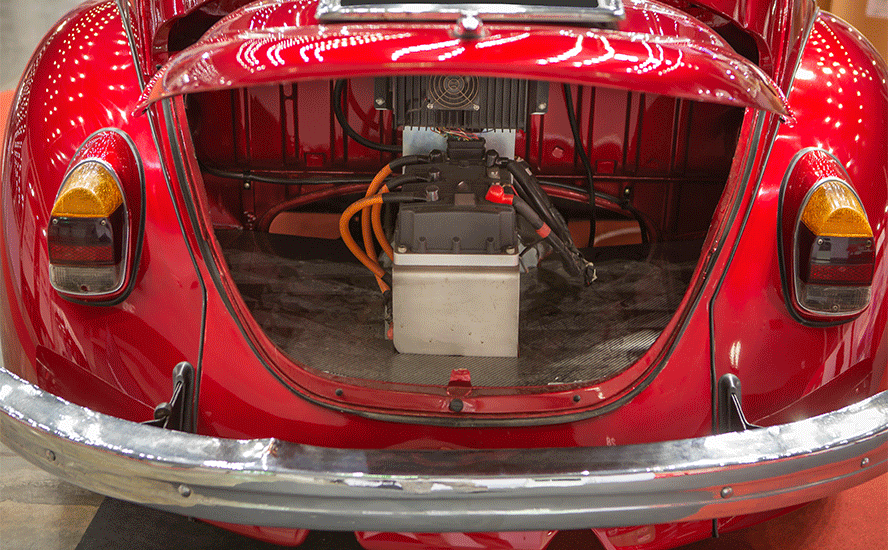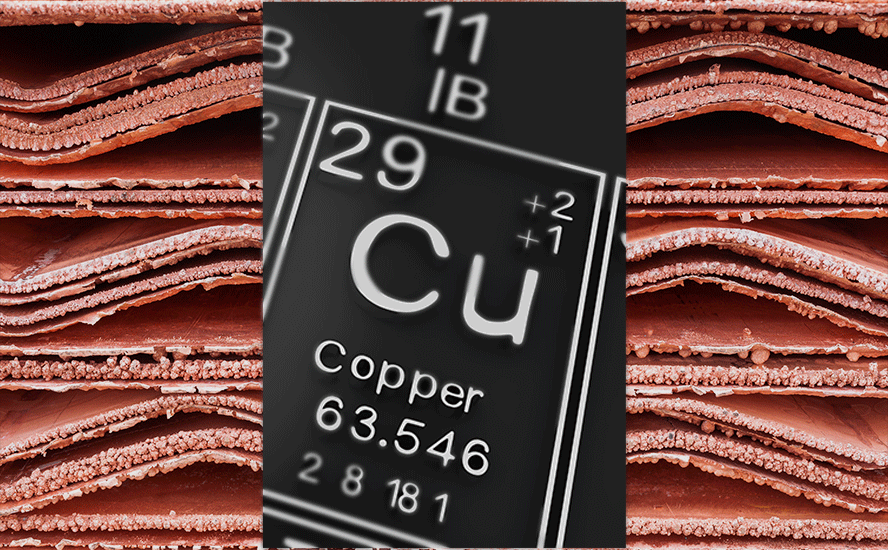Max Resource discovers another significant copper-silver zone at its massive CESAR project in Colombia – Richard Mills
2023.05.28
Max Resource Corp. (TSX.V: MAX; OTC: MXROF; Frankfurt: M1D2) announced this week the discovery of another significant copper-silver system, called AM-7, located within the AM District of its wholly owned CESAR project in Colombia.
AM-7 represents the seventh discovery by Max in the AM District. It encompasses five historic open-cut copper workings extending over 700 meters. With this discovery, the company has now identified 21 targets on its district-scale CESAR property that spans over 90 kilometers of the copper-rich Cesar Basin.

Geologically, the AM-7 target represents classic stratiform copper-silver mineralization hosted in interbedded mudstone, siltstone, and fine-grained, cross-bedded red-bed sandstone of the La Quinta Formation. The mineralized horizon is a tabular body that ranges from 0.3m to 2m wide and extends for over 1,600m along strike.
Chalcocite is the main copper‐bearing mineral (80% by weight) in the prospect and is concentrated along stratigraphic laminations, and as disseminated grains. Malachite and azurite have also been observed. Carbonaceous material was associated with all mineralized beds.
“AM-7 appears to be a significant discovery with potential for multiple stacked mineralized horizons across an impressive strike length of at least 1,600m and is open in all directions,” Max CEO Brett Matich commented in a May 25 news release.
Channel and chip samples have been collected across AM-7 at intervals over the length of the exposed mineralization, with results pending.
The discovery of AM-7, as Matich notes, underscores the potential of the Cesar Basin to host multiple depositional models. “Max is one of the first companies to recognize this part of Colombia is underexplored for copper, and our persistence and patience continue to be rewarded as evidenced by the AM-7 discovery,” he said.
Overview of CESAR Project
Max’s CESAR project can be found along the copper-silver-rich Cesar basin of northeastern Colombia. This region provides access to major infrastructure resulting from oil & gas and mining operations, including Cerrejón, the largest coal mine in South America, held by Glencore.
In 2022, Max executed a two-year co-operation agreement with Endeavour Silver Corp. (TSX: EDR, NYSE: EXK), a mid-tier precious miner operating four mines in Mexico, to help the company significantly expand its landholdings at CESAR. In turn, Endeavour will hold an underlying 0.5% NSR.
At the moment, Max’s mining concessions collectively span over 188 km², representing the largest area prospective for copper in the prolific Cesar sedimentary basin. The property is divided between three major copper-silver zones (AM, Conejo & URU) individually located along a 90 km long belt (see map below).

The Cesar Basin has a simplified Jurassic-Triassic stratigraphy, characterized by Cu-Mo-Au porphyry and porphyry-related vein systems in the upper levels and sediment-hosted style Cu-Ag deposits lower down.

Starting in the far north of the Jurassic basin, classic stacked red-bed outcrops with extensive lateral continuity have been rock sampled within the 32 km long AM District. Highlight values of 34.4% copper and 305 g/t silver have been documented in these sedimentary red-bed sequences.
The Conejo District, midway south, demonstrates mineralization at the contact of intermediate and felsic volcanics which outcrops over 3.7 km. The average of surface samples at a 2.0% cut-off comes in at 4.9% copper.
To the far south, the 2022 inaugural drilling was initiated at two mineralized surface exposures, each located 750 m apart and lie within the URU District’s 20 km long, 2 km wide mineralized target area.
This URU drill program was the first opportunity to test continuity of the structurally controlled copper-silver mineralization within the volcanic host rocks in the sub-basinal environment of the Cesar sedimentary basin.
World-Class Comparables
Max first discovered copper-silver mineralization at AM in 2020, and followed that up with the Conejo and URU discoveries a year later. Currently there are two primary depositional models being used for the massive CESAR project.
The sediment-hosted stratiform copper-silver mineralization found in the southern end (URU and Conejo zones) of its Cesar project is interpreted to be analogous to the Central African Copper Belt (CACB), while the northern end (AM zone) is compared to the Kupferschiefer deposits in Poland.

It’s estimated that nearly 50% of the copper known to exist in sediment-hosted deposits is contained in the CACB, headlined by Ivanhoe Mines’ (TSX: IVN) 95-billion-pound Kamoa-Kakula discovery in the Democratic Republic of Congo.
Kupferschiefer, considered to be the world’s largest silver producer and Europe’s largest copper source, is a mining orebody ranging from 0.5 to 5.5m thick at depths of 500m, grading 1.49% copper and 48.6 g/t silver. The silver yield is almost twice the production of the world’s second largest silver mine.
Based on the hypothesis that the mineralization at the northern end of its property is sediment-hosted and stratiform, similar in style to the Kupfershiefer, Max began the 2023 exploration season on the AM mining concessions.
Geological mapping and historical artisanal mining at the Herradura and Sierra targets, located within the AM District, indicate that mineralization occurs in at least four horizons in the stratigraphic sequence.
To confirm the continuity of mineralization and its hypothesis, Max drilled two scout holes down dip from surface exposures at Herradura this past January. The holes were spaced 250m apart and drilled to a depth of approximately 350m. Both intersected multiple copper-replacement beds containing malachite and chalcocite with copper values ranging from 0.04% to 0.96%.

These results indeed confirm the presence of Kupferschiefer-style mineralization within the northern AM District.
Max’s first diamond drill program last fall at the 74 km² URU District also demonstrated its proof-of-concept. The program was designed to test the continuity of the structurally controlled copper-silver mineralization within the volcanic host rocks similar to the CACB.
Drilling at the URU-C and URU-CE targets, located 0.75 km apart, confirmed the continuation of copper-silver mineralization at depth. Twelve of the 14 holes intersected mineralized zones, with six intersecting significant copper-silver mineralization.
At URU-C, a 9m of 7.0% Cu + 115 g/t Ag discovery was confirmed at depth by hole URU-12, which intersected 10.6m of 3.4% Cu + 48 g/t Ag. This hole also included 0.8m of 18.5% Cu + 292 g/t Ag. Further drilling is planned to confirm continuation of high-grade mineralization down dip.
At URU-CE the 19m of 1.3% Cu discovery was confirmed by hole URU-9, which intersected a broad zone of copper oxide returning 33m of 0.3% Cu from 4.0m, including 16.5m of 0.5% Cu. Max believes this broad associated alteration zone implies the potential for a bulk tonnage system. Planned drilling will also target surface higher-grade zones, discovered by rock channel sampling along strike 235m to the south.
Exploration Objective
This year, Max has decided to take a two-pronged approach to ongoing exploration on its CESAR project: 1) To evaluate and prioritize existing targets within the 187 km² of mining concessions for drill testing; and 2) continue the regional sampling and prospecting program to identify additional copper-silver targets along the 90-km long CESAR belt.
“The ultimate goal of our detailed mapping and geophysical surveys is to delineate multiple drill-ready targets along this massive copper system,” Matich commented on the 2023 exploration program.
In the last two years, Max has collected 6,500 surface rock samples over the CESAR belt; Of those, 1,125 samples have returned values greater than 1.0% copper with average grades of 3.5% copper and 36g/t silver.
Max’s geological crew has now started to revisit the clusters of the outcrops with grades >1.0% copper and perform detailed mapping. This has led to the discovery of two new priority targets (Sierra at AM and Potrero Grande at URU).
At present, there are six priority targets being evaluated (Herradura, Sierra, Molino, Potrero Grande, URU South Target 1 and Target 2; see below). At the same time, the regional program is continuing, with the objective of finding additional targets.

As mentioned, drilling has already taken place on the two AM targets. Within the URU District, metallurgical testing of URU-C and URU-CE drill samples remains underway.
In parallel, orientation geophysical surveys have commenced over targets where copper mineralization is outcropping at surface and there is evidence of historical artisanal mining.
The goal of the orientation surveys is to identify which geophysical techniques best identify the copper mineralization based on the two depositional models. Ground geophysical methods including magneto telluric (MT), magnetic, gravity, induced polarization (IP) and electromagnetic (EM) are being tested. In addition, historical seismic data collected over the prospects are being re-processed and interpreted.
Significance of Colombian Copper
Max’s ongoing exploration of its massive property in Colombia’s Cesar Basin may hold the key to unlocking the next wave of copper supply.
It’s no secret that the world is going to need lots and lots of copper in the coming years given the global energy transition. BloombergNEF estimates that copper demand, driven by various clean energy initiatives, will grow 53% to 39 million metric tons by 2040. Analysts at S&P Global are expecting an even quicker and bigger jump, with copper demand set to double to 50 million metric tonnes by 2035.

In a scenario that meets the Paris Agreement goals (as in the IEA’s Sustainable Development Scenario), the energy sector’s share of total demand must rise significantly over the next two decades to over 40% for copper.
However, looking further ahead in a scenario consistent with climate goals, the expected supply from existing mines and projects under construction is estimated to meet only 80% of the world’s copper needs by 2030, the IEA says.
According to consulting firm McKinsey, electrification is expected to create a 6.5 million ton shortfall at the start of the next decade, highlighting a substantial output gap that the mining industry has to address.
Therefore, new copper mines must be built, and in a timely manner, to close this gap. But this may be easier said than done. Among the issues impeding new supply are lower ore grades, depletion of existing mines, a lack of new discoveries, and resource nationalism in three of the main copper-producing countries: Chile, Peru, and the DRC.
Chile, the top producer, serves as a good example of why new copper supply is so hard to come by. The country’s output has stagnated due to deteriorating ore quality and water restrictions in the arid north. Permitting is also getting tougher.
Output from state-owned miner Codelco is near the lowest level in a quarter of a century, underscoring the copper industry’s battle to maintain production as new deposits become trickier and pricier to develop.
Codelco recently reported that its wholly owned mines churned out 326,000 metric tons in the first three months of this year, down 10% from a year ago. That would put it just below its annual guidance of 1.35 million to 1.42 million tons.
“It’s a complex transition time, between deposits that are running out and projects that will come into operation,” Codelco’s CEO Andre Sougarret said in a statement.
Then there’s the recently approved mining royalty bill that requires companies responsible for over 80,000 tonnes of fine copper output a year to pay more taxes, which could scare away further investment from the likes of BHP and Glencore.
Meanwhile, a logistics issue is emerging in No. 2 producer Peru, which has long been marred by political instability. Still recovering from its worst social unrest in decades, Peru saw its copper exports plummet 20% during the first two months of the year, even as production rose.
Recent developments within the two biggest copper producers now have us questioning whether they can be relied upon for future supply to sustain the electrification demands, or do we need to start looking elsewhere?
Maybe that place is Colombia, which shares the geological advantages of the Andes, plus the mineral-rich basins previously explored for petroleum and known for their large coal reserves. To this day, many parts of Colombia, including the Cesar Basin, remain largely underexplored for key minerals like copper.
Conclusion
The increasing number of discoveries by Max at its CESAR property tells us that Colombia at least has a chance to become another emerging copper nation in the Andes.
In just over two years, the company has mapped out three distinct zones along the 90 km belt, and more importantly, confirmed the mineralization hosted there can be traced to two of the biggest copper systems on the planet.
Max now has as many as 21 targets that it’s evaluating for drill testing, signifying the district-scale nature of its project and what we can look forward to from its future exploration.
Max Resource Corp.
TSXV:MAX; OTC:MXROF; Frankfurt:M1D2
Cdn$0.125 2023.05.26
Shares Outstanding 161.9m
Market cap Cdn$20.2m
MAX website
Richard (Rick) Mills
aheadoftheherd.com
subscribe to my free newsletter
Legal Notice / Disclaimer
Ahead of the Herd newsletter, aheadoftheherd.com, hereafter known as AOTH.
Please read the entire Disclaimer carefully before you use this website or read the newsletter. If you do not agree to all the AOTH/Richard Mills Disclaimer, do not access/read this website/newsletter/article, or any of its pages. By reading/using this AOTH/Richard Mills website/newsletter/article, and whether you actually read this Disclaimer, you are deemed to have accepted it.
Any AOTH/Richard Mills document is not, and should not be, construed as an offer to sell or the solicitation of an offer to purchase or subscribe for any investment.
AOTH/Richard Mills has based this document on information obtained from sources he believes to be reliable, but which has not been independently verified.
AOTH/Richard Mills makes no guarantee, representation or warranty and accepts no responsibility or liability as to its accuracy or completeness.
Expressions of opinion are those of AOTH/Richard Mills only and are subject to change without notice.
AOTH/Richard Mills assumes no warranty, liability or guarantee for the current relevance, correctness or completeness of any information provided within this Report and will not be held liable for the consequence of reliance upon any opinion or statement contained herein or any omission.
Furthermore, AOTH/Richard Mills assumes no liability for any direct or indirect loss or damage for lost profit, which you may incur as a result of the use and existence of the information provided within this AOTH/Richard Mills Report.
You agree that by reading AOTH/Richard Mills articles, you are acting at your OWN RISK. In no event should AOTH/Richard Mills liable for any direct or indirect trading losses caused by any information contained in AOTH/Richard Mills articles. Information in AOTH/Richard Mills articles is not an offer to sell or a solicitation of an offer to buy any security. AOTH/Richard Mills is not suggesting the transacting of any financial instruments.
Our publications are not a recommendation to buy or sell a security – no information posted on this site is to be considered investment advice or a recommendation to do anything involving finance or money aside from performing your own due diligence and consulting with your personal registered broker/financial advisor.
AOTH/Richard Mills recommends that before investing in any securities, you consult with a professional financial planner or advisor, and that you should conduct a complete and independent investigation before investing in any security after prudent consideration of all pertinent risks. Ahead of the Herd is not a registered broker, dealer, analyst, or advisor. We hold no investment licenses and may not sell, offer to sell, or offer to buy any security.
Richard owns shares of Max Resource Corp. (TSXV:MAX). MAX is a paid sponsor on his site aheadoftheherd.com
This article is issued on behalf of MAX
Legal Notice / Disclaimer
Ahead of the Herd newsletter, aheadoftheherd.com, hereafter known as AOTH.Please read the entire Disclaimer carefully before you use this website or read the newsletter. If you do not agree to all the AOTH/Richard Mills Disclaimer, do not access/read this website/newsletter/article, or any of its pages. By reading/using this AOTH/Richard Mills website/newsletter/article, and whether you actually read this Disclaimer, you are deemed to have accepted it.



